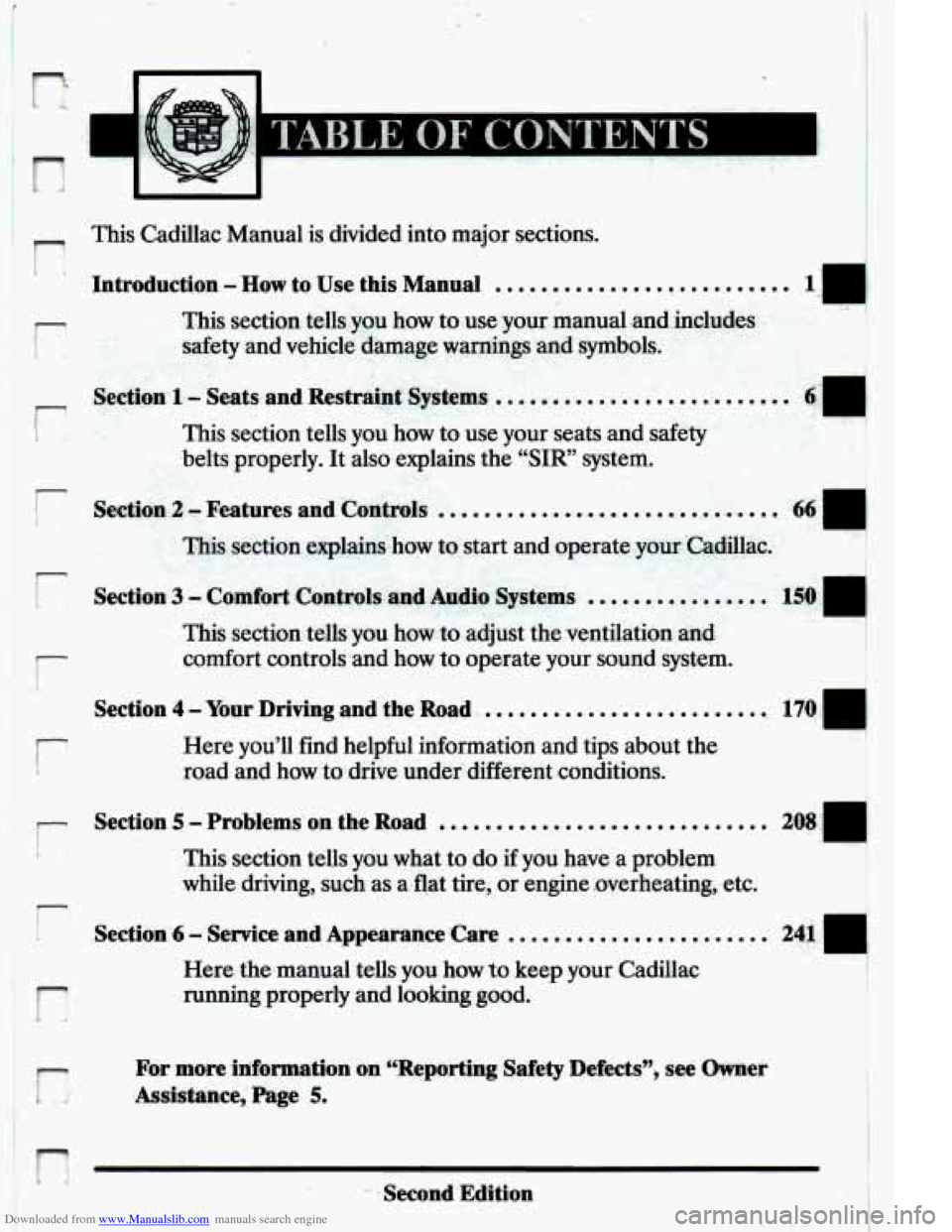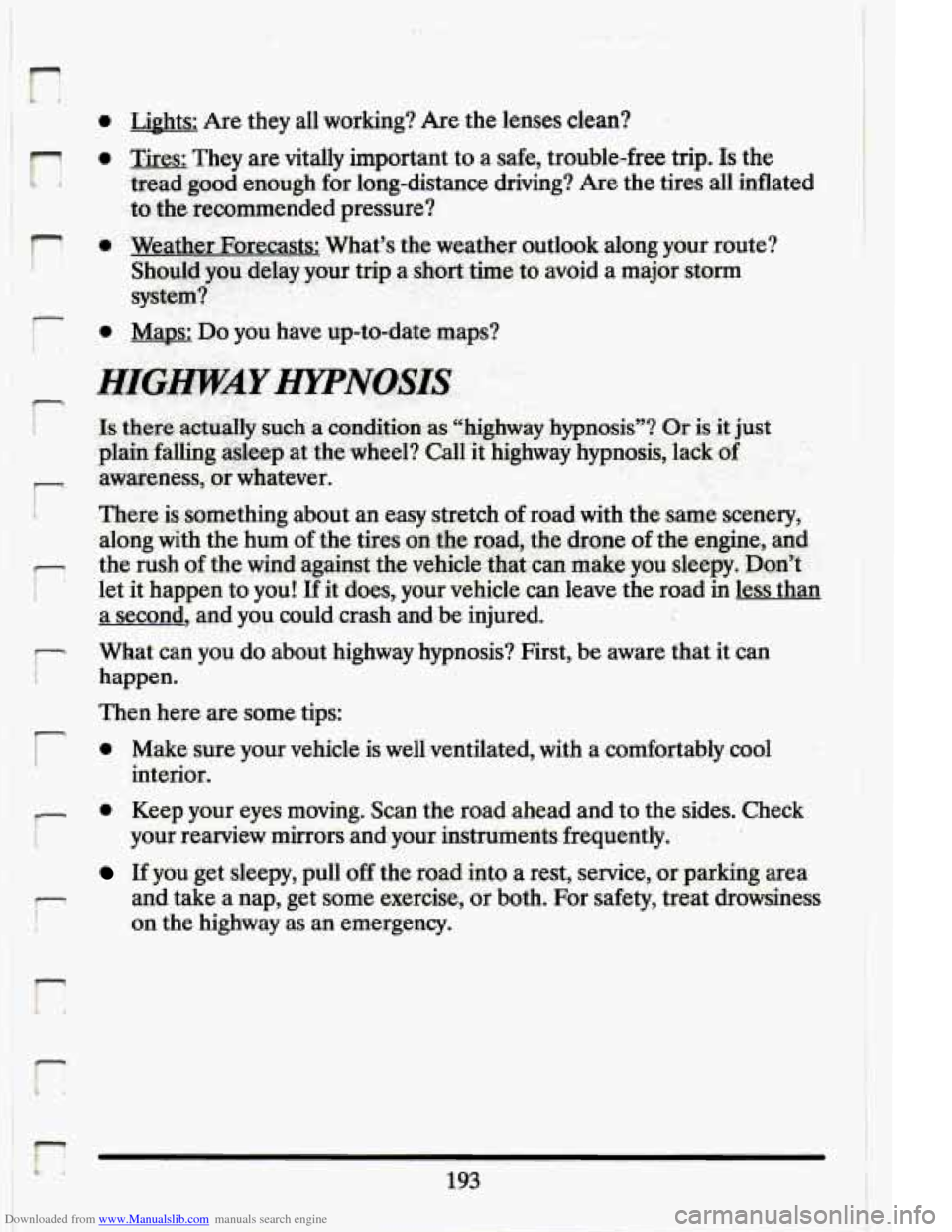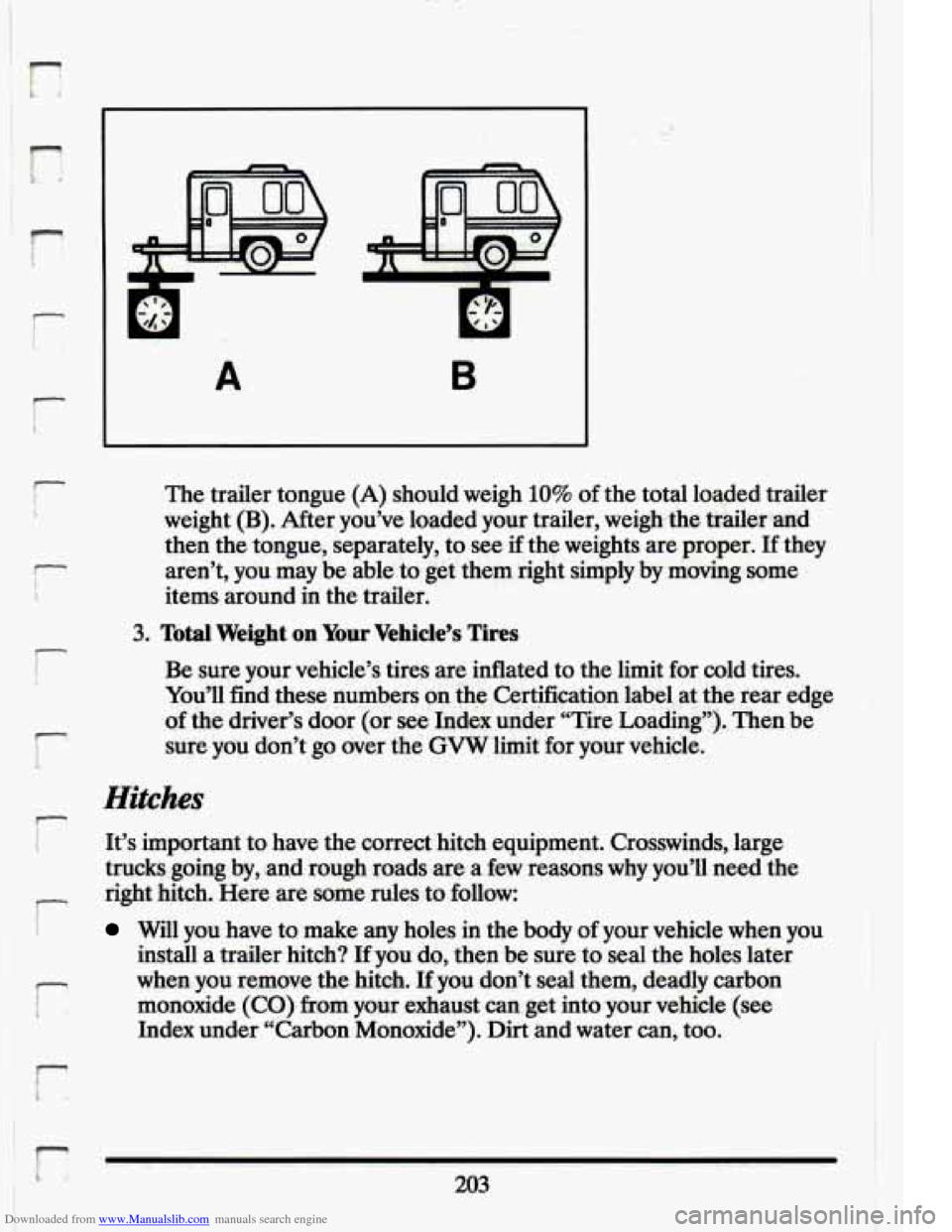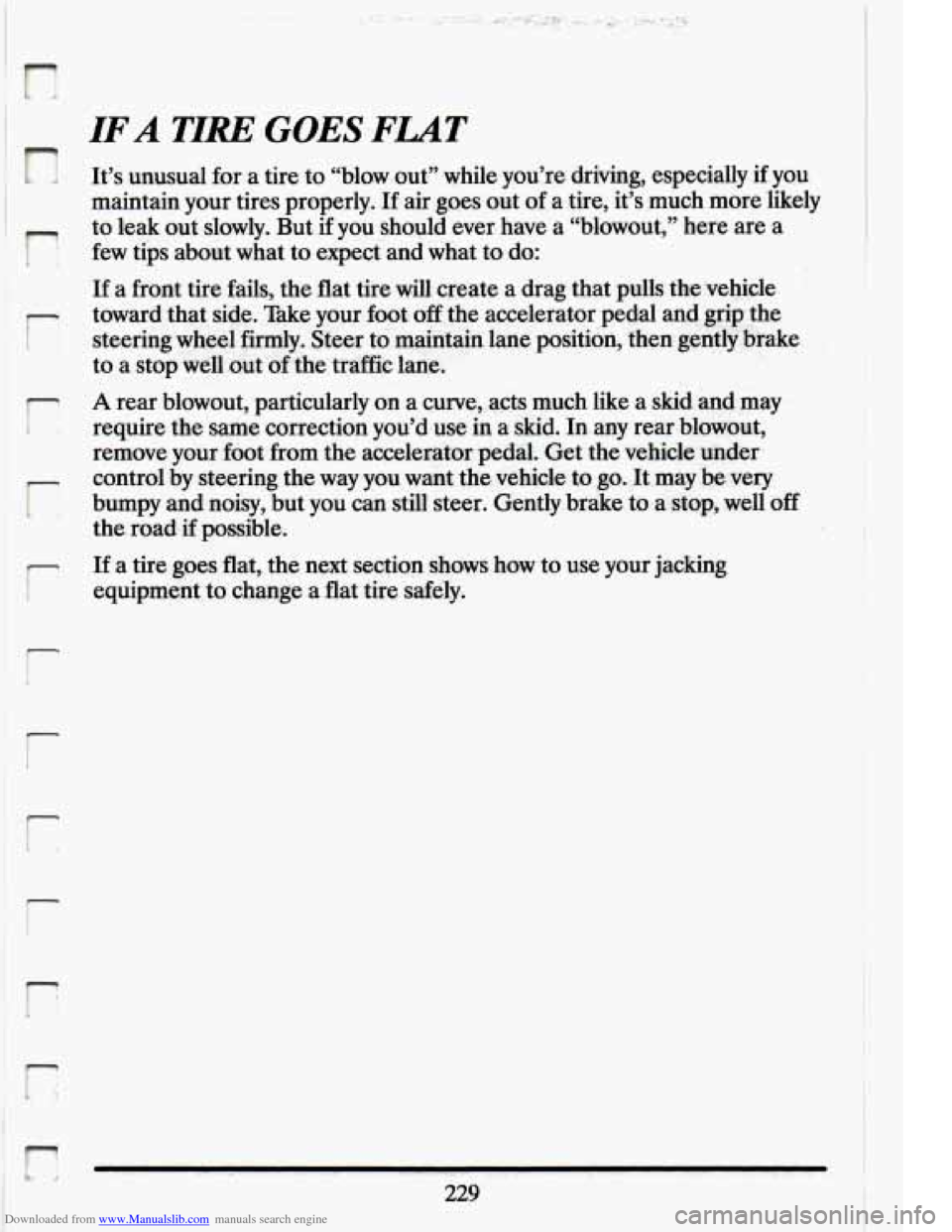Page 11 of 398

Downloaded from www.Manualslib.com manuals search engine n This Cadillac Manual is divided into major sections.
I1
.Introduction-How to Use this Manual ..........................
- 2 This section tells. you ‘how to use your manual and includes
. . safety and vehicle damage warnings .and symbols.
,.
Section-1.- Seats and Restrainat: Systems .......................... 6.; 1 7 ‘, -. I
‘i This section tells you how to use your seats and safety
belts properly. It also.explains the
“SIR” system.
p Section 2 - Features and Contmls ......................... ,. ....
Ws.section explains how to start and operate your Caditlac.
.This section .tells you how- to .adjust the ventilation and
comfort controlsand how to operate your sound system.
Section4-YourDrivingandtheRoad. .......................... 170 1
iI
Here you’ll find helpful information and tips about the
road and how. to drive under’ different conditions.
. Section5-’ProblemsontheRoad .............................
Thissection tells you.what to do if you have a problem
while driving, such as a..flat tire, or
engine.overheating,.etc.
I
r .Section 6 - Service and AppearanceCare .......................
Herethe.manua1 tells you how.to keep your Cadillac
running properly and looking
good.
For more information on ‘‘Reporting Safety Defects”, see her
I7 .hsistance,hge 5.
...
Page 205 of 398

Downloaded from www.Manualslib.com manuals search engine n
r !
1- ,
r I
ii
P
I
- i
r
E‘
0 LiEhts: Are they all working? Are the lenses clean?
0 Tires: They are vitally important to a safe, trouble-free trip. Is the
tread good enough for long-distance driving? Are the tires all inflated
I
to the recommended pressure? 1 I
0 Weather Forecasts: What’s the weather outlook along your route?
Shodd you delay your trip a
short time to avoid a major storm
system?
0 Maps; Do you have up-to-date maps?
HIGHFKAYHWNOSIS
Is there actually such a condition as “highway hypnosis”? Or is it just
plain falling asleep at the wheel? Call it.highway hypnosis; lack
of
awareness, or whatever.
There
is something about an easy stretch of road with the same scenery,
along with the
hum of the tires on the road, the drone of the engine, and
the rush
of the wind against the vehicle. that can make you sleepy. Don’t
let it happen to you!
If it does, your vehicle can leave the road in less than
a second, and you could crash and be injured.
What can you do about highway hypnosis? First,
be aware that it can
happen.
Then here are some tips:
0 Make sure your vehicle is well ventilated, with a comfortably cool
interior.
0 Keep your eyes moving. Scan the road ahead and to the sides. Check
If you get sleepy, pull off the road into a rest, service., or parking area
your rearview
mirrors and
your instruments frequently.
and take a nap, get some exercise, or both. For safety, treat drowsiness
on the highway as an emergency.
i
193
Page 206 of 398
Downloaded from www.Manualslib.com manuals search engine HILL AND MOUNTMN ROADS
Driving on steep hills or mountains is different from driving in flat or
rolling terrain.
If you drive regularly in steep country, or if you’re planning to visit there,
here are some tips that can make your trips safer and more enjoyable.
Keep your vehicle in good shape. Check all fluid levels and a\
lso the
brakes, tires, cooling system and transaxle. These parts can work hard
on mountain roads.
Know how to go down hills. The most important thing to know is this:
let your engine do some of the slowing down. Shift to a lower gear
when you go down a steep
or long hill.
194
Page 215 of 398

Downloaded from www.Manualslib.com manuals search engine P
r
r,
r
r
The trailer tongue (A) should weigh 10% of the total loaded trailer
weight
(B). After you’ve loaded your trailer, weigh the trailerand
then the tongue, separately, to see
if the weights are proper. If they
aren’t, you may be able to get them.right simply by moving-some
items around in the trailer.
3. Total Weight on Your Vehicle’s Tires
Be sure your vehicle’s tires are inflated to the limit for cold tires.
You’ll find these numbers on the Certification label at the rear edge
of the driver’s door (or see Index-under “Tire Loading”). Then be
sure you don’t go over the
GVW limit for your vehicle.
r !
Hitches
It’s important to have the correct hitch equipment. Crosswinds, large
trucks going by, and rough roads are a few reasons why you’ll need the
right hitch. Here are some rules to
follow:
Will you have to make any holes in the body of your vehicle when you
install a trailer hitch?
If you do, then be sure to seal the holes later
when you remove the hitch.
If you don’t seal them, deadly carbon
monoxide (CO) from your exhaust can get into your vehicle (see
Index under “Carbon Monoxide”). Dirt and water can, too.
r i. .,
203
Page 241 of 398

Downloaded from www.Manualslib.com manuals search engine !r
r
r
r L
I-
‘.. c ..e
IF A TIRE GOES FLAT
It’s unusual for a: tire to “blow out” while you’re driving, especially if you
maintain your tires properly. If air goes out of a. tire, it’s much more ‘likely
to leak out slowly.
But if you should ever have a “blowout,” here are a
few tips about what to expect and what to do:
If a front tire fails, the flat tire will create a drag that pulls the vehicle
toward that side. Take your
foot, off .the accelerator pedal and grip- the
steering wheel
firmly. Steer to maintain lane position, then-gently brake
to a stop well out of the traffic lane.
A rear blowout, particularly on a curve, acts much like a skid and may
require the same correction you’d use in a skid. In .any rear blowout,
remove your foot from the accelexator pedal. Get the vehicle under
control by steering the way
you want the vehicle to go. It may be very
bumpy and noisy, but you can still steer. Gently brake to a stop, well
off
the. road.if possible.
If a tire goes flat, the next section shows how to use your jacking
equipment to change a flat tire safely.
. . ._ .. . .
229
Page 242 of 398
Downloaded from www.Manualslib.com manuals search engine CIUNGING A FLAT TIRE
If a tire goes flat, avoid further tire and wheel damage by driving slowly to
a level place. Turn on your hazard warning flashers.
The following steps will
tell you how to use the jack and change a tire.
230
Page 245 of 398
Downloaded from www.Manualslib.com manuals search engine !- I
P
-
r
r
I' ! I
Using the wheel
wrench, loosen
all the
wheel nuts. Don't remove them yet.
Position the jack
under the vehicle.
Your vehicle has a
notch on the frame
near each
of the
wheels
(A front and
B rear). Fit the lift
head into the notch
nearest the wheel
with the flat tire.
233
Ir
I
Page 246 of 398
Downloaded from www.Manualslib.com manuals search engine Raise the vehicle by
rotating the wheel
wrench clockwise.
Raise the vehicle far
enough
off the
ground
so there is
enough room to
remove the flat tire.
Remove all the wheel
nuts and take
off the
flat tire.
234
CI